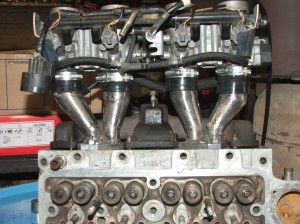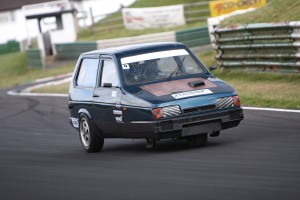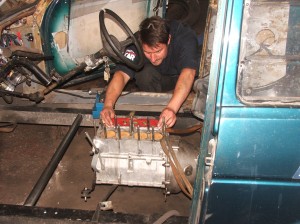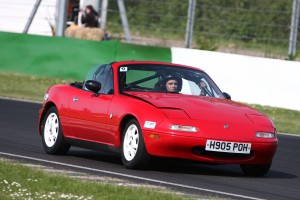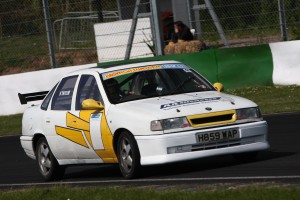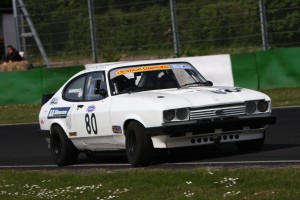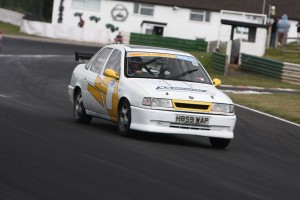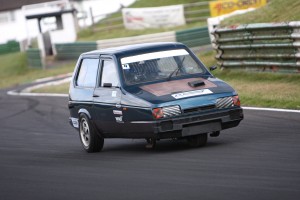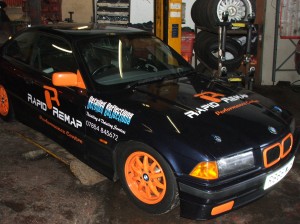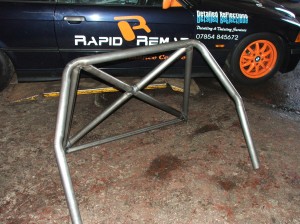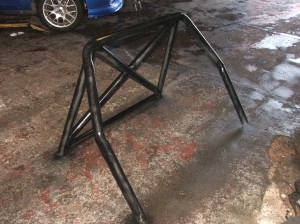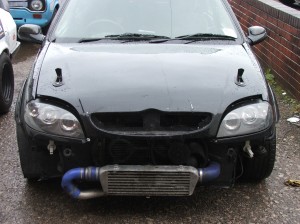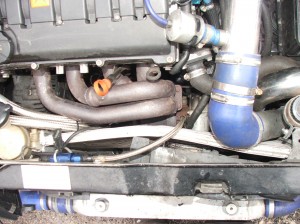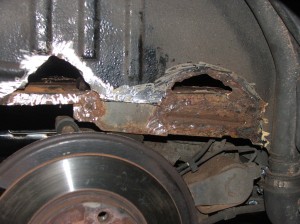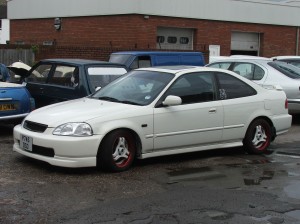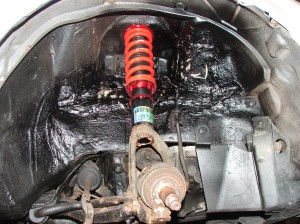This classic cortina gets used in the occasional hillclimb and sprint event, which having worked on it is very brave of the owner. These things are worth a bob or two and he’s a brave man throwing it around a track. Especially considering he restored it from a basket case by himself. All we had to do on this one was get him some more ground clearance. The exhaust had been custom built elsewhere but it didn’t really fit his needs. The car is lower than standard and the exhaust scraped in various places. We reused a large amount of what was already there but with a few changes we tucked the exhaust away. There was so much extra clearance that we were able to lower the engine slightly which will help the cars handling. If I had a car this valuable and I was throwing about on a race track I’d want the handling to be perfect! 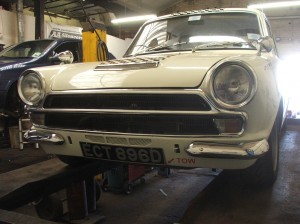

Posts Tagged ‘Track day’
low rider
Friday, October 5th, 2012Robin Returns
Tuesday, August 14th, 2012After test runs at Santa Pod the Robin hit the track at Mallory Park. With it’s suspension upgrades the grip was so good we upped the boost and timing slightly for more power. About 3 laps later the headgasket blew, it was fairly inevitable. After the Nissan Deltawing was so successful in this years Le Mans we opted to take the Robin project to the next level. The Robin already uses many similar principals to the Deltawing but until now has used a different concept for weight distribution. The whole car is coming apart again to have a massive rearward shift designed into the weight balance. The engine will get more power and better cooling. 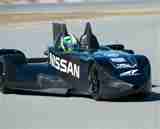
It’s what we do- excerpt from an article for Practical Performance Car magazine
Friday, April 27th, 2012It’s strange that the first question people ask when they’re checking out modified cars is often ‘How much power has it got?’ It’s all well and good being able to say it’s got 400 bhp, but how much weight is that power having to shift? If the car weighs two tonnes then you’ve only got 200 bhp per tonne, which is suddenly less impressive. That’s only equal to a 100 bhp engine in a 500 kg car. The thing is if you tell people you’ve only got 100 bhp they’ll snigger and walk away. ‘Pfff, my Mom’s Corsa has got more power than that’. The conversation’s over before anyone mentions weight.
Weight goes far beyond the simple bhp/tonne figure though. Bigger engines will often produce more than enough power to compensate for their extra weight. Carrying a hoofing great engine around does nothing for the handling though. The overall weight of a car will make a huge difference to how it accelerates, brakes and turns into a corner. The distribution of the weight in the car is just as important and can be used to either tune or ruin the handling characteristics.
It’s fairly obvious that having a light car means you can accelerate and brake faster, there’s less weight to move around. But just as important is how the weight is spread out across the cars tyres. Each tyre is actually holding up a different weight. In most road cars with the engine up front, the front tyres are holding up a lot more weight than the rears. Likewise with only the driver in, the off side tyres are carrying more weight than the nearside. Amongst other things, the amount of weight (or down force) a tyre has on it will dictate how much grip it can produce, up to a point. From that you could think a heavier car could corner faster. The problem is that the cars weight also acts sideways in a corner and it takes some of the available grip of the tyre and pulls it sideways, causing the tyre to ‘scrub‘. All tyres scrub sideways when turning, it’s known as the slip angle. Push the slip angle too far and you’re sliding, push the slide too far and you’re spinning. Heavier cars increase slip angles faster than light ones so they run out of grip faster.
To help ensure each tyre is carrying an equal load to start with, cars can be corner weighted. That involves raising the spring heights so more load goes onto the corners where there was less. Unless you have a very well balanced car the weight distribution will always be biased in one direction or another, but it helps to spread the cars weight as evenly as possible. This means each tyre is doing it’s fair share of clinging your car to the road. Corner weighting a car doesn’t necessarily move the weight distribution in the car, it just alters how the car’s suspension supports it.
Of course all that talk of spreading the weight out on the tyres is massively over simplified. There’s so many other factors influencing how the car’s suspension behaves, and all we’ve considered so far is how the weight is supported across the four corners. We should also spare a thought for where the weight is in the car. Rather than just say the car has weight, the weight distribution around the car can all be added up and said to have a centre of gravity. It’s basically the balance point for all the weight in the car. If the car was hung from a rope attached at the centre of gravity it would always be balanced. The centre of gravity also has a height within the car. The higher the centre of gravity the more a car will lean as it corners. It leans, or rolls because opposing forces act on the centre of gravity as you corner. It’s those forces you can feel when you are pushed out of your seat as the car brakes or corners. This is called weight transfer. The more it rolls during a corner the more it takes load off the inside tyres reducing the overall grip available to the car.
The centre of gravity rolls around a pivot point called its roll centre, which is set by the cars suspension pick up points. Unless you’re planning on moving the suspension pick up points the best way to reduce the amount of roll a car has is make it lighter and get the weight as low down in the car as possible. Stiffer suspension springs will resist body roll. Generally you’ll always want the softest springs possible for traction but stiff enough to stop too much weight transfer. Assuming your tyres are up to the job of transmitting the load then sometimes a bit more weight transfer in a straight line (pitch) helps push them into the road surface and get more grip. For example if you have a rear wheel drive car with the engine at the front you’ll need a bit of weight transfer to get the driving tyres to grip properly. Generally though too much weight transfer reduces grip and ruins the balance in the car, especially during cornering (roll). It’s that balance that everyone’s trying to find when they set a car up. How much weight your car has and where it’s distributed will affect how much weight transfer you have, how much work your suspension is having to do and so how hard you can push your tyres when accelerating, braking and cornering. Performance driving techniques are all developed around shifting the balance around the tyres to get the best grip for the longest time. It’s all of these factors and more that we focus on when developing a car, and it’s driver.
Boys Toys
Tuesday, November 29th, 2011This BMW is a track day regular but as the owners talent has grown he felt the need for more grip. We carried out a full geoetry check but as a lot of the car was standard we could do little more than adjust the tracking. The customer decided to start his upgrades with a set of camber adjustable top mounts. These allowed us to improve the geometry to give him more front end grip. Next on the list is a set of coilovers. One step at a time though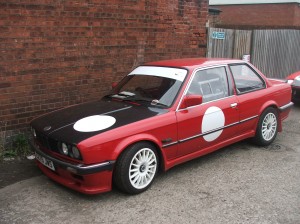
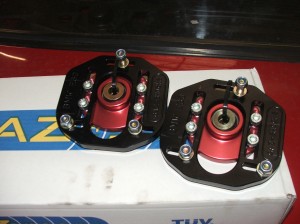
PPC in the Park
Tuesday, June 14th, 2011AA Silencers were at Practical performance car’s annual show and Mallory Park. AA Silencers owner Mark Hammersleys is a writer for the magazine and gave passenger rides and driver tuition at the show. He also took out the magazines Rolls Royce for some demo laps. AA Silencers staff also took their cars out for some track action
Rapid Robin
Thursday, May 26th, 2011AA Silencers and AA Sport went to Mallory Park with their Reliant Robin recently. The theory behind this is that if we can make a Robin handle on a race track then we can do it to anything. The next step is better braking, front suspension tweaks and then a turbo. The car handled well considering it’s deficiency in the wheel department and was ridiculous fun to drive. Don’t knock it ’til you’ve tried it.
Difficult De-cat
Wednesday, March 30th, 2011This lambo was in need of a little extra silencing. The cat’s had failed causing a loss of power and a nasty noise. The customer wanted us to take out the cats and replace them with silencer boxes hoping for more power and less noise. That’s always a tall order but even more so when squeezed into the back of a lambo. We managed to twist and turn the pipework and boxes into the tiny gaps. hopefully the car will be a little quieter, it will certainly get it’s power back with the exhaust breathing properly.
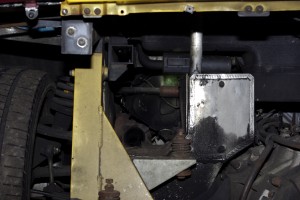
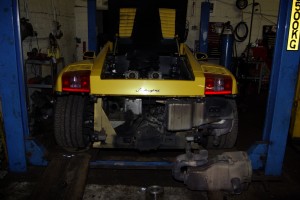
’tis the season to build roll cages
Monday, December 6th, 2010I think the snow must have made everyone a little cautious. This is the third roll cage we’ve built in as many weeks. This time it’s for a track car built by our friends at Rapid Remap. This car is foir promotional use and they guys wanted it to look the part and be safe too. Rapid Remap take care of our remapping services, they’re experts in their field, offering a superb tailored service. They take such good care of their customers we’re happy to refer people to them, knowing they’ll be in safe hands. This BMW has had uprated suspension and the Rapid Remap hydrogen drive system fitted. The car interior had been stripped ready for the roll cage. It’s just a simple rear cage but should provide the safety they need.
Sick Saxo
Monday, November 29th, 2010This Saxo was due in for some preparation work as it’s owner was heading east towards the Nurbergring in Germany. We had various things to look at including brakes, a bit of welding ready for a roll cage and to check over the turbo install. The turbo had been installed by a previous owner and They’d done a pretty good job by all accounts. If Citroen had done it themselves it wouldn’t have been any better. Unfortunatley the day it was due in the Saxo was driven into in a car park casuing a fair amount of front end damage. The clock was ticking as the date for track day was set so a few late nights were called upon. It all went back together and the car made it to the nurbergring on time.
track day civic
Monday, September 13th, 2010This civic came in needing an MoT and setting up for the race track. The two things don’t normally go hand in hand but this little terrier has to do daily driving duties and will see some serious track day action too. There a was a big list of work including welding and various suspension upgrades, wheel bearings, brakes etc. Once it was all assembled the geometry equipment came out to make sure everything was pointing in the right direction and away it went for it’s MoT. With a green ticket first time through the owner went away with a big smile and no doubt headed for the nearest race track.

